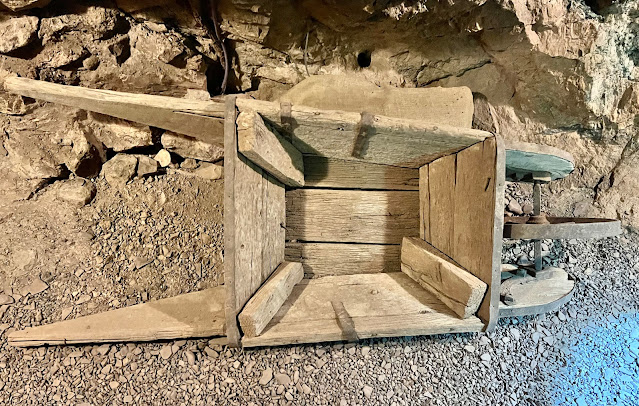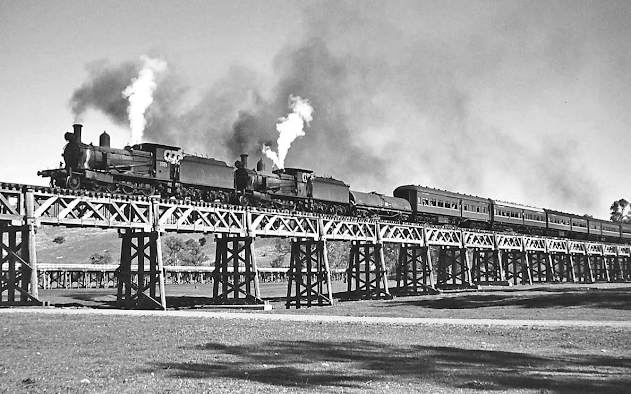20230521 SA Blinman Mine
We left for the Blinman Mine just 60ks up the road driving through winding roads, great for bikes said Des as we pass the long range of rolling hills as far as you can see, travelling along Explores Way. Blinman history goes back to 1862 when many Cornish families left Britain when times were hard for a better life, but with the heat and living in tents many woman and children died and men and boys worked in the mine six days a week under extreme conditions.
Williams cottage is built from the local native Cyprus pine logs, most of them about 120 mm diameter and 3 metres long with 500 mm is buried in the ground. Each log is secured to a square rail with hand forged 100 mm nails.
Built about 1890, the inside of each log was flattened with an adze axe to add wall paper or just straight hessian with a white wash paint.
One of the bedrooms and there are still some original items left behind, I would say definitely the mattress was from that era.
The kitchen was seperate from the house and this is the original stove that has been renovated, I thought it looked a tad new.
An aerial shot of the mine at Blinman.
Blinman Mine in the early days.
Roberts "cousins" playing around racing some goats. The goats provided the families with a reliable source of milk - 1920
Into the Blinman Mine we go to experience a bit of what it was like working underground in the 19th century. It was the locals who raised money and put in the work that was a 10 year project that involved extensive excavations to access tunnels that were once worked by the Cornish Miners in 1862.
The Cornish people were small so the underground tunnels should be just right for the likes of Des and I so our walk through the mine was relatively easy compared to others.
Once a boy reached the age of 14 years they started working in the 18 metre mine shafts working from dust to dawn carting and sorting rocks using wheelbarrows like this that had no legs so they couldn’t put it down to rest, can you imagine the kids today doing that.
They would carry small candles and mount them in the cracks of walls and buckets like this were used to carry rocks to the surface. Many died from explosions and blood poisoning from broken teeth, we were told while in the mine not to touch the rock wall due to the poison. After learning of this if a miner or child broke a tooth while undergoing it would simply be distracted.
Some of the tools used in the Mine
There were no head lamps in those days, they used candles like this to light there way and in a dark mine it wasn’t very bright.
This photo was taken from inside the mine looking up and in those day the children would run across those cut out rocks while playing around the mine, they lived in treacherous times in those days.Picture in the 1800’s working in a mine and climbing down a shaft this deep, with no safety gear while hurling copper to the smelter on the surface, not my idea of fun. About 200,000 tonnes of ore yielded 10,000 tonnes of copper metal, 90% of which was produced in the periods 1862-75 & 1903-07. Today this would be valued at about $30 million.
We climbed to the top on the hill above the town where old smelters and bits and pieces of machinery scatted the earth, remnants of the late 19th century when the town was alive with miners.
Water storage tanks from 1904 or old boilers.
Taking the highway back to Hawkers when a flock of cockatoos feasting on some wild Prickly Paddy Melon take flight.
Next Chapter Soon
























Comments
Post a Comment